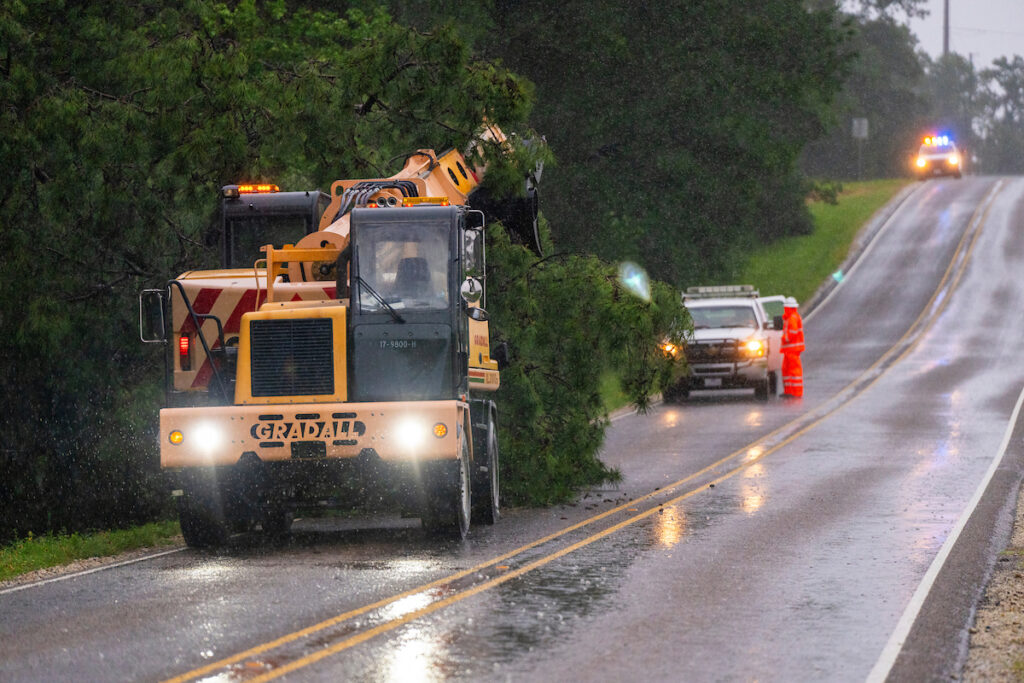Hurricane recovery: Steps to safely begin the process
Disaster Assessment and Recovery unit provides guidance for initial response after a hurricane
You have evacuated to a safe area and the hurricane has passed. But now you want to know if your home and property have been damaged — and what to do next.
While this is a tense and uncertain time, Monty Dozier, Ph.D., Bryan-College Station, head of the Texas A&M AgriLife Extension Service Disaster Assessment and Recovery, DAR, unit, said it is essential to be careful and patient following a hurricane.

Dozier said it is vitally important to establish if local authorities have specific requirements for you to reenter the affected area. Damage to trees and power lines or flooding may make an immediate return improbable.
“While you may be anxious to return to your home to assess any damage, it may be better initially to remain in the safe place you and your family have found until the authorities have given the go-ahead to return,” Dozier said. “This is a critical time to learn more about any ongoing electrical outages, road closures, environmental threats or other conditions. It is vital that you follow the advice given by emergency officials.”
Remember these tips when returning home
Once you are cleared to return to the affected area, Dozier said be sure to have your identification and/or proof of residency.
“Unfortunately, some people will go to an affected area not because they live there but because they are curious,” he said. “Their presence creates an added distraction and can also impede those who really need help.”
Dozier gave other quick tips for your arrival home:
— Survey your home and the immediate area for downed trees or power lines, gas leaks, wildlife or other potential hazards.
— Turn off the electricity, gas and water to reduce the risk of a possible leak or electric shock.

— Avoid drinking tap water or using it to prepare food after a hurricane.
“With the flooding that occurs during a hurricane, it’s likely that your water source, especially if you have a well, may have been contaminated,” Dozier said. “Wait until officials say your water is safe to drink or until you have had your well inspected and your well water tested.”
Dozier also warned against children or adults being in flood waters as there may be debris, sewage, harmful chemicals or potentially dangerous wildlife, such as snakes.
Working with insurance and FEMA
Jordan Baze, recovery coordinator and state operations center liaison for the DAR unit, Bryan-College Station, said an important step in hurricane recovery is understanding your insurance coverage and documenting and assembling all the necessary information to submit a claim.
Baze said it is also important to learn what relief might be available through Federal Emergency Management Agency, FEMA.
Your initial recovery steps might include securing the premises and making temporary repairs to the property to prevent further damage. These could include covering holes in the roof with plastic or a tarp, covering or boarding windows, removing standing water and drying out carpets.
Keep a list of purchases and repairs from this initial recovery process for the insurance company, she said.
“One of the most important things you can do after experiencing a hurricane is to document,” Baze said.
This may include photographic images of what your home and buildings looked like pre-disaster.
“By having photos of what your home looks like pre-disaster, insurance and state officials can evaluate the extent of damages,” Baze said. “In addition to reporting to insurance companies, working with state officials to report any damages to a home or business is vital because it also contributes to initiating FEMA assistance.”
Baze said residents with livestock should assemble proof of ownership, photos for animal identification and any relevant animal identification documentation.
Hurricane damage reporting tools
Texas utilizes iSTAT and pSTAT as reporting tools for residential, commercial and agricultural damages. Agriculture-related damage should be reported into the iSTAT portal.
“Reporting damages with the state helps the state coordinate with FEMA to potentially open up individual and public assistance,” Baze said. “If these programs open up after meeting established loss thresholds, FEMA will send in a team to help the counties with signing up for their assistance.”
Additional hurricane recovery resources
Dozier said the Disaster Assessment and Recovery and the AgriLife Learn websites have a variety of materials related to disaster preparation and recovery. Some of the more popular resources include:
- After a Disaster Guidebook. This publication contains some 30 sections related to disaster recovery, including how to keep safe, first aid, assessing structural damage, disinfecting water and controlling mold. In addition to downloading the entire guide in the e-book format, users may also download the complete guide or specific sections in PDF format.
- Managing Fire Ants After a Flood.
- Managing Mosquitoes After a Flood.
- Snakes and Flooding.
“We’re here to help Texans recover from disaster,” Dozier said. “The Disaster Assessment and Recovery unit has had a lot of experience reacting to emergencies and disasters throughout the state. We also have a statewide network of agents, specialists and others to draw support and expertise from for disaster recovery efforts.”



